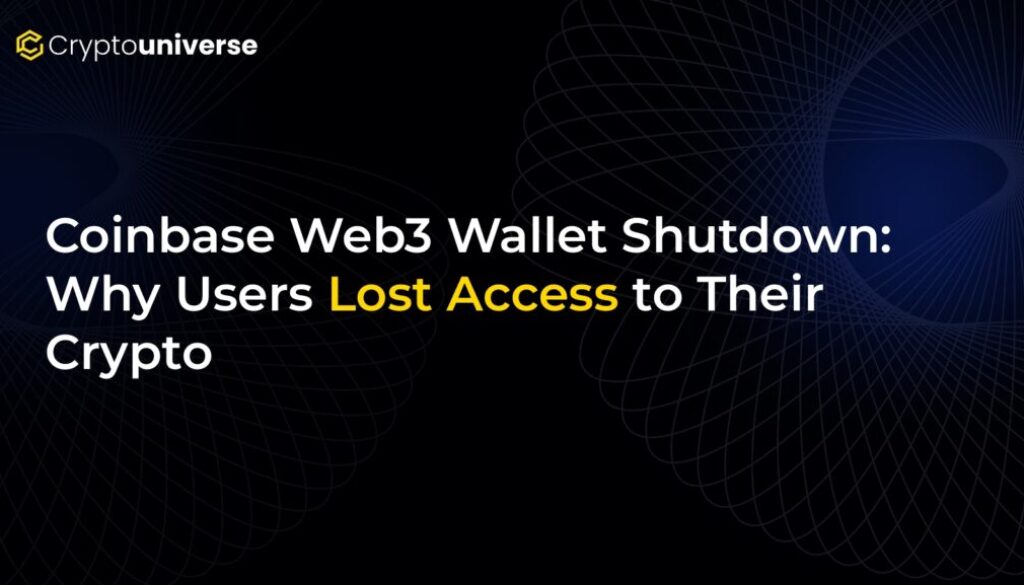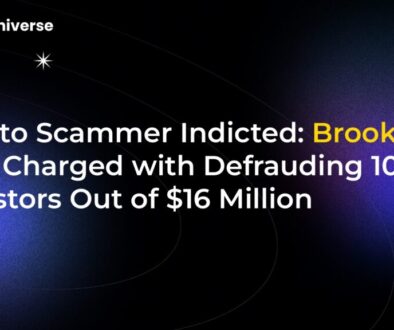Coinbase Web3 Wallet Shutdown: Why Users Lost Access to Their Crypto

A Costly Lesson in Digital Ownership
On July 7, 2025, Coinbase officially pulled the plug on its integrated Web3 Wallet, a feature within its main app. For many users, this wasn’t just the sunsetting of a product; it was the moment they discovered their NFTs, tokens, and other digital assets on Ethereum and Base were gone, potentially forever. The ensuing wave of confusion and anger on social media and forums highlights a critical, often misunderstood, aspect of cryptocurrency: who really holds the keys?
The core of the issue is that Coinbase cannot help users recover these funds. The assets aren’t just misplaced; they are stranded in digital wallets that have become inaccessible. This event serves as a stark reminder of the crypto mantra: “Not your keys, not your coins.”
What Was the Coinbase Web3 Wallet? A Wolf in Sheep’s Clothing
The Coinbase Web3 Wallet was designed for convenience. It lived inside the main Coinbase app and offered a seamless bridge to the world of decentralized applications (dapps). Users could mint NFTs, trade on decentralized exchanges (DEXs), and explore Web3 without the perceived hassle of managing complex private keys or seed phrases. It felt easy and safe, all under the familiar Coinbase brand.
However, this convenience masked a crucial detail. Unlike the standalone Coinbase Wallet app or other popular wallets like MetaMask, the integrated Web3 Wallet was not a self-custody product. It operated on a shared custody model. In simple terms:
- You initiated the transactions.
- Coinbase managed the private keys on your behalf.
Many users assumed they had full ownership, just like with a traditional self-custody wallet. They were never given a 12-word seed phrase to write down because, behind the scenes, Coinbase held the ultimate control. When Coinbase shut the service down, they also shut down the only door to these wallets.
The Aftermath: Why Can’t Coinbase Recover the Funds?
Since the shutdown, countless users have realized their assets are missing. The immediate reaction is often to contact Coinbase support, but the company’s hands are tied. Because these were on-chain wallets, the assets still exist on the blockchain. However, without the private key, there is no way to sign a transaction to move them.
Think of it like this: Your crypto is in a vault on the blockchain. The private key is the only key that can open that vault. Coinbase created and held that key for you. By discontinuing the service, they have effectively thrown the key away. Unless a user proactively exported their private key before the shutdown—a feature most were unaware of—the vault is now permanently locked.
The Critical Difference: Understanding Your Wallet Type
The Coinbase Web3 Wallet Shutdown: Why Users
Self-Custody (Non-Custodial) Wallets
Examples: MetaMask, Trust Wallet, Ledger, Trezor, the standalone Coinbase Wallet app.
With these wallets, you and you alone control the private keys, typically represented by a 12 or 24-word seed phrase. You have absolute control and full responsibility. If you lose your seed phrase, your funds are gone. If a platform goes down, you can still access your funds by importing your seed phrase into another compatible wallet.
Custodial Wallets
Examples: Your main trading account on Coinbase, Binance, or Kraken.
Here, the exchange holds the keys for you. You have a username and password. It’s convenient for trading, but you are trusting the exchange with your assets. This is where the risk of exchange hacks, freezes, or collapses comes into play.
The Danger Zone: Shared & Semi-Custodial Wallets
The integrated Coinbase Web3 Wallet fell into this confusing middle ground. It offered the on-chain functionality of a self-custody wallet but with the key management of a custodial service. This blend of features, designed to reduce friction, ultimately created a single point of failure that has now cost users dearly.
How to Protect Your Crypto Assets Moving Forward
This incident is a painful but necessary wake-up call. As centralized companies try to onboard the next billion users, the lines between custody types will only get blurrier. Here’s how to protect yourself:
- Identify Your Wallet Type: Before sending significant funds to any wallet, ask the most important question: “Do I control the private keys or seed phrase?” If the answer is no, or if you’re unsure, assume you don’t have full ownership.
- Embrace Self-Custody: For long-term holding and true ownership of your digital assets, a self-custody wallet is the gold standard. Invest in a hardware wallet like a Ledger or Trezor for maximum security.
- Secure Your Seed Phrase: Your seed phrase is the master key to your crypto. Write it down on paper or metal and store it in multiple secure, offline locations. Never store it digitally (in a photo, text file, or cloud drive).
- Read the Fine Print: Be wary of any service that promises the benefits of Web3 without the responsibility. Convenience often comes at the hidden cost of control.
Conclusion: A Warning for the Entire Web3 Ecosystem
The Coinbase Web3 Wallet Shutdown: Why Users


